Youth Care Treatment Center and school has helped teens with alcohol addiction all over the United States for 30 years. Our unique approach is based off of solid morals and beliefs to help adolescents be successful in turning their lives around.
Understanding Alcohol Addiction
Learn about alcohol addiction and substance abuse
Alcohol abuse occurs when a person consumes alcohol in a quantity that impairs his or her ability to think and act clearly. Alcohol abuse can refer both to a one-time occurrence and a long-term behavior pattern. For some individuals, including children and adolescents, alcohol abuse can bring about addiction and dependence.
The abuse of any substance can cause an individual to face losing their livelihood. For a child or adolescent, the risks linked to alcohol abuse can lead to effects such as physical injury as a result of dangerous behaviors, bad academic performance, damaging health risks including organ damage and death, as well as poor decision-making. Some children and adolescents experiment with alcohol because of their inability to properly cope with stress, or because of factors such as peer pressure. No matter the reason behind abusing alcohol, treatment can be tremendously beneficial in helping decrease and/or eliminate the dangerous effects that come from abusing this substance.
Statistics
Alcohol addiction statistics
According to the National Institute on Alcohol Abuse and Alcoholism (NIAAA), about 22.7% of adolescents ages 12 to 20, or about 8.7 million young people, have consumed alcohol in the previous 30 days. The U.S. Centers for Disease Control and Prevention (CDC) reports that excessive consumption of alcohol is a factor in the deaths of about 4,300 people under the age of 21 every year in the United States. The CDC also reports that alcohol abuse among young people is responsible for about 189,000 emergency room visits every year.
Causes and Risk Factors
Causes and risk factors for alcohol addiction
Experts agree that some individuals will abuse alcohol while others will not based on genetic, physical, and environmental factors. Consider the following:
Genetic: Specialists in the field of addiction have determined that there is a genetic component to the development of alcohol addiction. For example, those with a first-degree family member who has battled with alcoholism are more likely to abuse this same substance and potentially become addicted to it.
Physical: When an individual is under the influence of alcohol, his or her brain functioning becomes impaired. Continued abuse of alcohol impacts brain functioning in a way that brain chemistry can be changed if the use of alcohol does not stop. Alcohol consumption can lead to the imbalance of the neurotransmitter dopamine, which is responsible for regulating one’s mood. This can bring about specific mental health conditions.
Environmental: The environment in which one is brought up can add to one’s chances of developing an alcohol abuse problem. Exposure to alcohol abuse, easy access to alcohol, and home environments where chronic stress is present can cause a child or adolescent to start using alcohol. The chances of a child or adolescent abusing this substance become greater when he or she does not possess the right coping skills to manage stress. Experts agree that exposure to trauma, neglect, or abuse can cause a child or adolescent to be more likely to abuse alcohol in the future.
Risk Factors:
- Lacking appropriate coping skills
- Low socioeconomic status
- Early exposure to alcohol use or abuse
- Family history of alcohol or drug abuse
- Lack of impulse control
- Family history of mental illness
- Preexisting or undiagnosed mental illness
- Easy access to alcohol
- Strong peer influence to drink
- Having low self-esteem
- Discord among friends and/or loved ones
Signs and Symptoms
Signs and symptoms of alcohol addiction
The signs and symptoms that a child or adolescent might be abusing alcohol can vary based on the amount that is being abused and the length of time that one has been abusing alcohol for. When trying to identify if a young individual is struggling with alcohol abuse, one must consider the following:
Behavioral symptoms:
- Stealing alcohol
- Concealing alcohol and/or drinking habits
- Decline in academic functioning
- Missing school
- Lying
- Unwarranted anger or aggression
- Social withdrawal or isolation
- Ongoing drinking without regard for consequences
- Drinking alone
Physical symptoms:
- Weight gain or loss
- Skin flushing
- Headaches
- Poor appetite
- Nausea
- Vomiting
- Slurred speech
- Impaired coordination
Cognitive symptoms:
- Poor concentration
- Changes in temperament
- Personality changes
- Problems with memory
- Flawed decision-making
Psychosocial symptoms:
- Elevated anxiety
- Increased hostility
- Ever-present cravings to drink
- Mood swings
- Episodes of depression
- Irritability
Effects
Effects of alcohol addiction
Continued abuse of alcohol can cause a child or an adolescent to become vulnerable to many different effects. Depending on the young individual’s age, the parts of his or her life that are impacted can vary. For those young individuals who abuse alcohol, decision-making is often impaired and can bring on the following effects:
- Disciplinary action at school / expulsion
- Engaging in risky sexual behaviors
- Poor school performance
- Academic failure
- Engaging in criminal activity
- Interaction with law enforcement
- Driving under the influence
- Increased conflict with family / teachers / peers / other figures of authority
In addition, there are many health risks that can develop because of alcohol abuse, including:
- Liver disease
- Overdose leading to death
- Cognitive impairments
- Weakened immune system
- Physical injury due to engaging in risky behaviors
- Development of another mental health problem or addiction
- Damage to vital organs
- Exposure to viruses or infections due to engaging in risky sexual behaviors
Co-Occurring Disorders
Alcohol addiction and co-occurring disorders
Those who abuse alcohol often face other mental health issues. Whether alcohol is being abused to cover up unpleasant symptoms of a mental health condition or if alcohol is causing the onset of mental health symptoms to develop, the following can occur alongside of alcohol abuse:
- Posttraumatic stress disorder
- Personality disorders
- Anxiety disorders
- Bipolar disorder
- Another substance use disorder
- Depressive disorders
- Attention-deficit/hyperactivity disorder
Effects of Withdrawal and Overdose
Alcohol withdrawal and overdose
Effects of alcohol withdrawal: Depending on the period of time that a child or adolescent has spent abusing alcohol and the amount that he or she has abused, withdrawal symptoms will vary. Happening hours or days after the use of alcohol has stopped, the following withdrawal symptoms can develop:
- Sweating
- Fever
- Convulsions
- Tremors
- Anxiousness
- Depressed mood
- Emotional outbursts
- Irritability
- Jitteriness
- Increase in blood pressure
Effects of alcohol overdose: When a young individual consumes too much alcohol and his or her body is unable to metabolize it, he or she can overdose. Also known as alcohol poisoning, the following symptoms are connected to an alcohol overdose:
- Nausea
- Lack of response to outside stimuli
- Vomiting
- Slurred or incoherent speech
- Labored breathing








